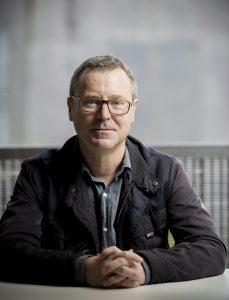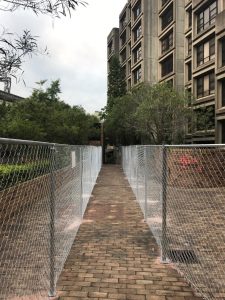 |
NSW Chapter President’s Message 22 May 2017
It was the American philosopher and reformer John Dewey who said: ‘Democracy has to be born anew every generation….’
Dewey’s maxim is particularly relevant in the light of the current prevailing attitude of the NSW Government to the protection of our built heritage. You have to go back more than 40 years to the Askin government to find another administration so in thrall to dollar values and so indifferent to protecting the public interest in the State’s built heritage, or even to the concept of public interest itself.
Thanks largely to the energetic public campaign led by my predecessor, Shaun Carter, the government-owned Sirius building has become the symbol of popular unrest against a government that neglects not only the maintenance of its own property but also its historical and architectural importance. The long-suffering community of Millers Point is being torn apart because of the government’s determination to sell properties they have inhabited for decades, despite the same government’s neglect of the houses they live in.
In the case of Sirius the amnesia is so complete that the government ignores the very reason for its design and construction as custom-built housing for local residents who would otherwise have been thrown on to the streets. The building is a celebration in physical form of the meaning of the Green Bans campaign.
But to this government it’s the $70M income from its demolition that matters, not its architectural, social or historical significance.

Fencing has recently been erected outside the Sirius building Photo: Ben Peake
Similarly, the long-term lease of the Bridge Street sandstone buildings, so fundamental to Sydney’s understanding of itself, is symptomatic of a government that sees no value in maintaining public buildings for public purposes. Even some of the arguments used as justification – that the private sector would make a better job of the buildings’ conservation and maintenance than the government itself – betray an existential despair that devalues the very concept of public interest and the public domain.
The government is not just a group of elected lawmakers. It is a corporate entity that has a symbolic value representing the continuity of the administration and public life of the community reaching right back to the landing of the First Fleet at Sydney Cove and the thousands of years of prior Aboriginal occupation and management of the land we now know as New South Wales.
The frustration here is that, as the government operates a heritage management system for the community, it should be government itself that sets the standard for both retaining and conserving government-owned buildings – buildings that are managed on the community’s behalf. With the Sirius non-decision, it has actually achieved the opposite; it has signalled to the rest of the community, particularly the private sector, that heritage protection is of no value if it prevents the owner from reaping a financial windfall from the sale of the site.
When a government administration is so neglectful of the value and significance of its own history you begin to realise the validity of Dewey’s observation. What is the meaning of our democracy in the 21st century? Is the conservation of our built heritage still relevant in a globally interconnected world? What is the value of retaining these elements of our collective past? How do we make their significance relevant to contemporary life?
John Dewey helps us to answer these questions. The full quotation is: ‘Democracy has to be born anew every generation – and education is its midwife’. Education right across the board. It’s not only the community that needs to rediscover the meaning and value of democracy, but also the government and the public sector. We should all be participants in this enterprise, not combatants.
Knowledge is power; it also builds cohesion, understanding and respect.
To give credit where it’s due, the government’s former Planning Minister, Rob Stokes, has proposed including the sustainable management of built and cultural heritage as one of the objectives of an amended Environmental Planning & Assessment Act. This would help to fix an anomaly that’s bedevilled heritage management for the last 40 years: heritage and planning are in two separate pieces of legislation that don’t relate well to each other. Making heritage management an objective of the planning legislation would help to knit them together more effectively.
It’s perhaps ironic that the Wran Labor government created the problem in the 1970s, but there’s a chance that the Berejiklian Coalition government will now close the gap.
Student Awards
As if we ever needed a reminder that heritage is something that we keep producing, I recently chaired the NSW Graduate & Student Awards jury along with jury members Steve Kooloos, (Marsh Cashman Kooloos), Dr Karen Burns (University of Melbourne), Deborah Hodge (Durbach Block Jaggers) and Michael Wiener (Mirvac Design).
These awards are an important measure of the design excellence exhibited within the four NSW schools of architecture. In line with the NSW Architecture Awards process, this year students had five minutes to present their work, in addition to the physical submission of drawings and models.
As expected, the standard of the award winners was very high, but it was some of the work of the first degree students that particularly stood out and really excited the jury.
These awards are precisely the reason that the Institute holds education as one of its key pillars, and with it our shared aspirations of a culture of excellence.
The work is on display at Tusculum until the end of the week.
Andrew Nimmo
NSW President
